
The First and Only Weekly Online Fanzine Devoted to the Life and Works of Edgar Rice Burroughs |
 |

The First and Only Weekly Online Fanzine Devoted to the Life and Works of Edgar Rice Burroughs |
 |

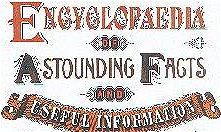 |
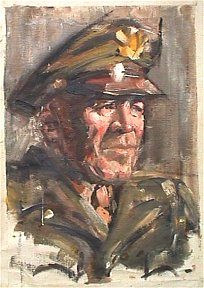 |
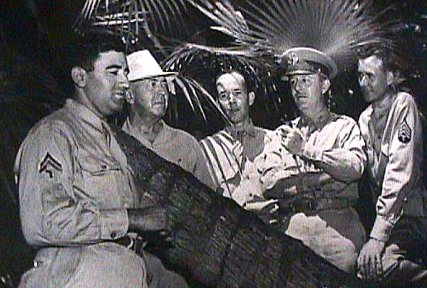
John August Adapting Tarzan for the Big Screen
Variety: Friday, June 27, 2003
Screenwriter John August, scribe of the "Charlie's Angels" franchise, will pen a live-action big-budget feature version of Tarzan for WB-based Jerry Weintraub Productions.Edgar Rice Burroughs' Tarzan of the Apes was written in 1912, and August says the film will be a big summer actioner that will see the classic tale updated much like the Superman and Batman legends have been over the year s.
A self-professed fan of the character since the 1970s animated series, August said Tarzan "feels like an enduring cultural myth like Hercules or Robin Hood."
"The movie versions of Tarzan always portray him as a sort of jungle hippie," he added. "Edgar Rice Burroughs' Tarzan is a much different character. He's more ferocious and wild, like Wolverine without the claws. That's the version we want to use."
Chimps genetically close to humans
By Richard Black
BBC science correspondent ~ May 20, 2003
Chimpanzees are so closely related to humans that they should properly be considered as members of the human family, according to new genetic research. Scientists from the Wayne State University, School of Medicine, Detroit, US, examined key genes in humans and several ape species and found our "life code" to be 99.4% the same as chimps. They propose moving common chimps and another very closely related ape, bonobos, into the genus, Homo, the taxonomic grouping researchers use to classify people in the animal kingdom. Humans, or Homo sapiens to give the species its scientific name, are the only living organism in the genus at the moment - although some extinct creatures such as Neanderthals ( Homo Neanderthalis ) also occupy the same grouping.Six species
"Since people have been studying primate evolution, there's been this dichotomy between humans and the apes," said Dr Derek Wildman, who has published the findings of the genetic study with colleagues in the Proceedings of the National Academy of Sciences (PNAS).
"And so what we've shown is that humans and chimpanzees are actually more similar to each other than either is to any of the other apes," he told BBC News Online. Modern genetic science offers researchers another way to establish the relationships between different species, by measuring the similarity of their DNA code. It is a far cry from the traditional way of categorising organisms on the basis of what they look like, either live or in fossil form.
The Detroit team compared 97 important genes from six different species: humans, chimpanzees, gorillas, orang-utans, Old World monkeys, and mice. From this, the scientists constructed an evolutionary tree that measured the degree of relatedness among the organisms.
Horses and donkeys
According to this analysis, chimpanzees and humans occupy sister branches on a family tree, with 99.4% genetic similarity. Next on the tree are gorillas, then orang-utans, followed by Old World monkeys. None of the primates were closely related to mice, which were used as a control.
Dr Wildman said: "You could say that humans and chimps are as similar to one another as say horses and donkeys. "And there really isn't much evidence for them to be divergent at the family level, which would be something like the divergence between apes and monkeys. "There has been this notion since Aristotle's time of this great chain of being with humans at the top and then less complex life at the bottom. But while that might seem intuitive to some people, it doesn't appear to be borne out by the data. "There's been as much change on the lineage on the line leading to chimpanzees as there has been on the lineage to humans since they last shared a common ancestor around six million years ago."
Chimp troubles
The Detroit team says its work supports the idea that all living apes should occupy the higher taxonomic grouping Hominidae, and that three species be established under the Homo genus. One would be Homo (Homo) sapiens , or humans; the second would be Homo (Pan) troglodytes , or common chimpanzees, and the third would be Homo (Pan) paniscus , or bonobos.Not all scientists will accept the new classification. Whereas Dr Wildman's team find that chimps and humans are 99.4% similar, other researchers last year put the similarity at around 95%; the figure you get depends on precisely which genetic differences you look at. As to whether this will improve the lot of chimpanzees themselves, a spokeswoman for the conservation group the Jane Goodall Foundation was sceptical. The problems of habitat loss and commercial bushmeat hunting would continue whatever genus we put them in, she said.
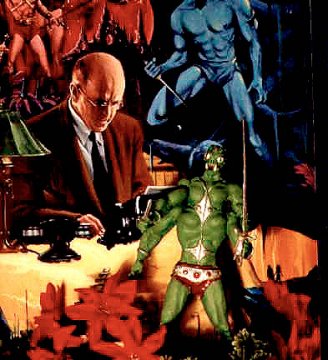
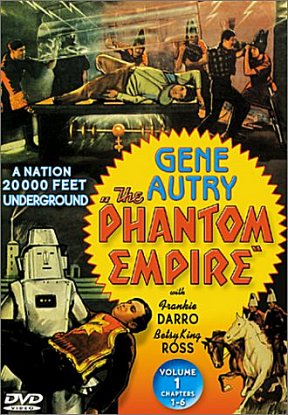
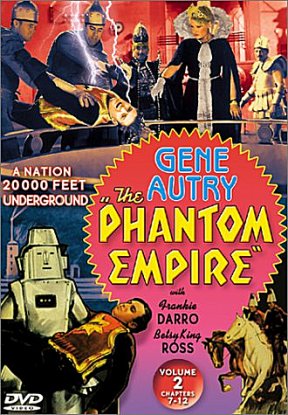
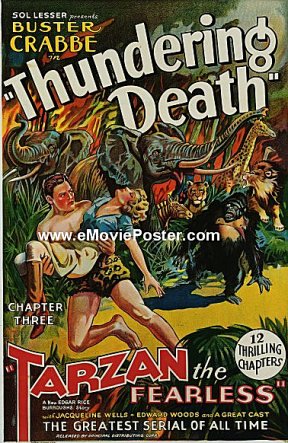
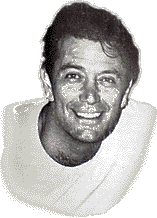
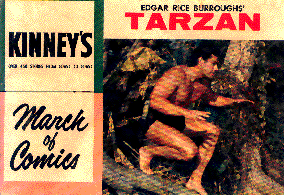
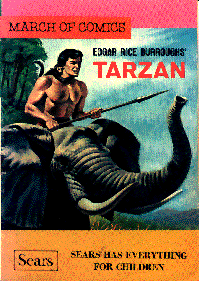
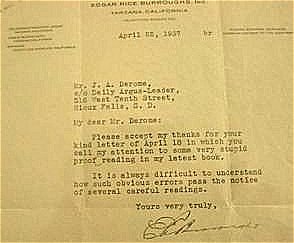
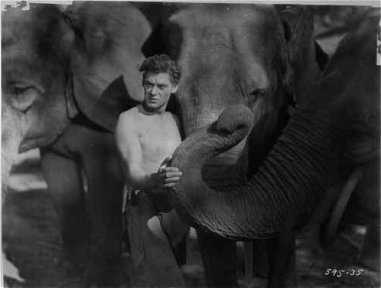
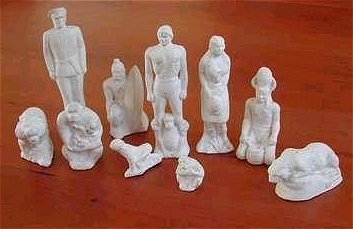
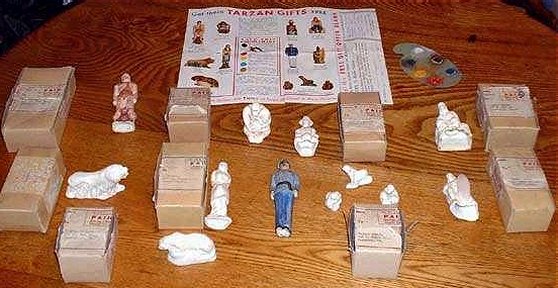
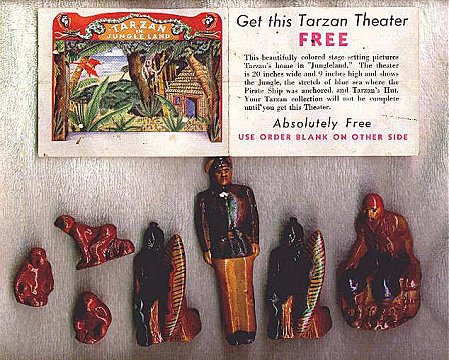
60. BURROUGHS, Edgar Rice. Archive. An extensive archive of over 2500 items including letters, documents, manuscript notes and materials, unique publications, photographs, and movie memorabilia, spanning the writer's entire life and documenting in great detail the period from the 1920s until his death -- an unparalleled collection that is a trove of scholarly research materials as well as a unique collection of original artifacts of the author's life and career. The only collection comparable to this is that of the author's estate in Tarzana, California, and this one is superior to that in a number of respects and contains the only copies extant of a large number of items that were destroyed by fire in Tarzana. The correspondence is heavy with intimate family and pointed business details; the documents and other memorabilia include personal and professional records, manuscripts and notes for his wartime publications, contracts and checks for his stories. The bulk of the collection is arranged chronologically, in 31 large loose-leaf notebooks. The first three cover the years from his birth to the late 1920s, by which time he was a successful and wealthy author. The other 28 cover the period from 1930-1950, documenting these years in great detail in both family and business matters.
Among the notable items in the collection are: the $700 check Burroughs cashed for the first "Tarzan" story, which he has been quoted as saying was the payment that gave him the confidence to continue writing and to make it a career; one of the estimated half dozen original mimeograph prints Burroughs made of his eyewitness account of the bombing of Pearl Harbor; and a typewritten travel journal of a cross-country trip he took with his family in 1916, illustrated with snapshots. Burroughs was particularly fond of camping in the Canyon Country of the Southwest in the early days of the National Parks, and several such trips are recounted here in typescript, with original photos as illustrations. There's also a map of the layout of the first subdivision of the Burroughs ranch, Tarzana, which later became the town of Tarzana, California. There is great breadth and depth in the area of the author's correspondence, including many retained copies of his own letters which help put the replies in unambiguous context. In addition, there are many significant artifacts of the noted writer's work and career: a privately printed volume of memoirs by the author's mother, illustrated by the author's nephew, and inscribed by Edgar at Christmas, 1914; a set of journal notes from his first airplane flight, written while in flight and with drawings of the sights he saw; his file box from Honolulu, in which he filed his war correspondence, as well a field notebook from his time in the Pacific as a correspondent; and much more.
Burroughs remained in close regular contact with his children even after they were grown, and much of their sustained correspondence is preserved in this collection. The letters not only recount factual information about family and other affairs but often veer into philosophical discourse on such subjects as religion, when the father felt a need or desire to clarify his position on a subject with one of the children. When Burroughs divorced his first wife, Emma -- the children's mother -- the rift in the Burroughs family is visible in the strained correspondence. Burroughs' ultimately successful efforts to reconcile the family can be seen in these years, especially when the Second World War throws all personal questions into a much larger context, and both Burroughs and his eldest son, Hulbert, are squarely in harm's way in the South Pacific theater. After the attack on Pearl Harbor, Burroughs became actively involved in the question of the postwar fate of the interned Japanese-Americans. Originally a staunch supporter of the policy of internment, Burroughs changed his attitude over the course of the war as he realized the racism infecting such "patriotic" attitudes and strove to separate the security concerns from such prejudices. He became a strong advocate for the rights of Japanese-Americans -- a very public change of posture that can be seen to reflect, in its own way, on the question of racism within the Tarzan novels and other Burroughs writings.
In the late 1920s, and especially in the 1930s when talking movies became standard, the Tarzan character reached a whole new audience, even larger than it had in the popular books. A radio series had started in the late 20s, and a comic strip in the 30s, and the archive admirably documents Burroughs' involvement in these enterprises -- sometimes from a distance, watching the studios compete to outdo each others' Tarzan movies, sometimes as a close critic, such as when he critiques a cartoon series his son Jack has gotten involved in with Bob Clampett, the Warner Brothers artist. He also was involved as a principal, being one of the producers of a movie, The New Adventures of Tarzan, shot on location in Central America in the 1930s, an effort fraught with almost unimaginable hardship and an ambitious attempt at realism at a time when the infrastructure of the Caribbean countries could scarcely support such an enterprise. The logistics and difficulties of the production are in abundant evidence in the archive, and ultimately Burroughs' decision to distance himself from the project in favor of letting the Hollywood studios produce Tarzan movies is documented. Numerous artifacts from the production form a part of the archive, as well as business correspondence relating to the funding of it and the production itself. Also, Burroughs' first meeting with Johnnie Weissmuller -- the most famous of the Tarzan actors -- and meetings with Buster Crabbe and other actors who played the role are documented in letters and photographs.
Burroughs' marriage in 1934 to Florence Gilbert and their move to Hawaii are represented in great detail in the archive, both in letters and photographs. Their social life is shown in stark contrast to the their dwindling funds. Their separation and divorce, when Burroughs could no longer maintain the facade of high living, is documented touchingly: its effect on his state of mind is revealed -- subtly in letters and more tellingly in legal documents; and its effect on his health is revealed in ever-increasing correspondence with doctors, prescriptions for medication, and finally in the accounts of a series of heart attacks that left the writer, after the war, in a state of substantial debilitation.
Burroughs' writing career is also in evidence throughout, albeit obliquely. He mentions the various books he is writing at different times; there are manuscripts he submitted for publication during the war; and the state of his finances is tied closely to his productiveness writing Tarzan stories as well as to the movies' adaptations of them. There are notebooks for one of his novels (Apache Devil) and the original typescripts of much of his war correspondence. There are unpublished interviews from that period, as well as the columns he wrote for a Hawaii paper.
There are also long strings of correspondence with two fans, which show the author's affinity for, and loyalty to, his readers. Both correspondences began when his fans were young and continued through their entire adult lives, until the author's death. Many other fan letters are present in the archive, including a number from noteworthy or famous figures, such as military or political leaders or the occasional celebrity.
Burroughs' ranch, Tarzana, figures prominently in the archive. Artifacts from the period -- photographs; books from Burroughs' library, including his dictionary and the thesaurus he used throughout his writing career -- are included in the collection, as well as a number of other books about him -- the first bibliography, the first biography, the definitive biography, which this collection augments in a number of significant matters.
Burroughs incorporated himself at the height of his success as a writer and in so doing established a precedent for franchising fictional characters that has today become part of the mainstream of literary life and integral to the Hollywood motion picture industry. While he was not the first writer to have his characters appear in numerous other media contexts and commercial tie-ins, he brought a modern-day marketing sensibility to the process that has helped shape the way literary and other intellectual properties are viewed today.
The final chapter of Burroughs' life -- the end of the war, his return from Hawaii, his declining health, his failing finances as paper shortages and strikes limit his ability to publish his books -- is all documented poignantly. The family's reconciliation and reunion is documented, as is the author's continued status as a celebrity, despite his personal hardships.
The popularity of Tarzan is phenomenal: Burroughs is one of the best-selling authors of all time, largely on the strength of the Tarzan series. But even more surprising than its popularity is the longevity of the series and its main character -- a longevity rivaled only, perhaps, by that of Tom Sawyer and Huck Finn. Virtually all of the material present here is unpublished, and unseen by earlier biographers and bibliographers. This archive offers a view of Edgar Rice Burroughs, the man and the writer, that would be impossible to assemble from any other single source today. Please inquire
Author Harlan Ellison and local conservationists have recently rescued Oak Forest Canyon in Sherman Oaks, CA from developers. Buckley High School purchased the land south of the school and has offered it to the Santa Monica Mountains Conservancy in exchange for an oak grove near the school.Harlan Ellison, who has fought back developers in the area for years, would like to create a 24-acre park in Sherman Oaks canyon dedicated to the memory of Edgar Rice Burroughs. ERB is said to have frequented the little canyon, riding on horseback and picnicking there. The area is also the inspiration for Tarzana.
Now, this is where you come in - this park simply won't happen without your help. Harlan, along with naturalist Arnold Newman, are seeking small donations, $5 to $10, to help build a docent's station at the top of Oak Forest Canyon. The station would include panels illustrating the paleontological history of Fossil Ridge and a small museum of Edgar Rice Burrough's work.
If enough money is raised, Ellison would also like to erect a life-size statue of Burroughs in the park on a black-marble pedestal, with another of Tarzan alongside. Ellison also says all of "ERBdom", the world's Edgar Rice Burroughs bibliophiles, would picnic on the property next May during their upcoming every-five-years gathering.
If you've got a little money left after Christmas shopping, or perhaps received a little in your stocking, whatever you could give could make a big difference in making this park happen. And if you're still looking for that perfect gift, or you've got the post-Xmas blues, what better way to show your love or perk yourself up than doing something for the planet and helping remember an author who has been a joy and inspiration to several generations?
HOW TO HELP:
The Santa Monica Mountains Conservancy has set up as trust account for private donations to help create the Edgar Rice Burroughs Memorial Park. To contribue, send a check to the ERB Memorial Fund at:Mountains Recreation and Conservation Authority
2600 Franklin Canyon Drive
Beverly Hills, CA 90210
Feb 26, 1996
DIED. MCLEAN STEVENSON, 66, actor; of a heart attack; in Tarzana, California. Stevenson starred in the first three seasons of the '70s television hit M*A*S*H as Lieut. Colonel Henry Blake, a fumbling fisherman-out-of-water who ruled over the blood and irony of an Army hospital during the Korean War.
 |
by Mary Murphy TV Guide ~ July 7, 2003 He likes his Guinness. He likes his Scotch.
|
 |
Let's face it: There's something seriously wimpy about the name Travis Fimmel. Think Travis Fimmel and you might imagine a schlepp with a plastic pocket protector, thick glasses, droopy slacks and zero sex appeal.Think again. Travis Fimmel is a former Calvin Klein underwear and jeans model. Don't pretend you haven't done a double take at his ads, particularly the one that left little to the imagination in terms of what Fimmel, an Australian, was sporting down under. That ad caused such a commotion on a busy London street that it was removed after an auto club claimed that women drivers were slowing down to ogle the billboard, triggering accidents and traffic jams. Although a slightly embarrassed Fimmel concedes that the endowment was enhanced ("At one point the cameraman was looking for his camera and I pulled it out of my pants," he jokes), the Klein campaign created legions of admirers worldwide.
Sitting opposite Fimmel, 23, in a Hollywood restaurant, it's easy to see why. His chiseled good looks are framed by shoulder-length blond hair, and his blue-green eyes are as piercing as Paul Newman's. And then there is the lean but sculpted body that led to the vehicular mayhem in London.
Now Fimmel is about to be crowned king of the jungle — OK, urban jungle — in WB's Tarzan and Jane, which premieres this fall. An updating of the classic character created by Edgar Rice Burroughs, the series plunks the legendary ape-man in New York City. There are no loincloths, no swinging vines and no Johnny Weissmuller-like yells.
Hacker: Nevertheless, says Ivana Chubbuck, Fimmel's acting coach, "Travis is a lot like Tarzan. He's raw and he's primal." Which should come in handy, since this Tarzan navigates a noir world more inspired by graphic novels than Burroughs' pulpy tales.
ADVANCE REVIEWS FOR "TARZAN AND JANE"Premise: The Tarzan story transplanted from the jungles of the Congo to the jungles of New York City. The pilot opens with Tarzan (Fimmel) fighting off a bunch of goons on a NYC rooftop and escaping from Greystoke Industries. Meanwhile, Jane Porter (Callies) is an NYPD detective who lives with her sister Bonnie (Potts) and is getting serious with her boyfriend, another detective named Mike (Messner).
Jane and her partner Sam (Nuñez) are frustrated because instead of helping to catch a serial killer, they've been assigned to investigate a pack of stray dogs causing damage in the city. While on their case Jane and Sam stumble across Tarzan eating garbage with the dogs. Tarzan flees and Jane follows him as he jumps from rooftop to rooftop. Jane, not having grown up in the jungle, almost falls to her death, but is saved at the last second by Tarzan. The two share a moment before a bunch of goons descend from a helicopter and capture Tarzan. Jane eventually tracks them back to Greystoke Industries and discovers that Tarzan is the nephew of Greystoke CEO Richard Clayton (Pileggi). Clayton never gave up searching for his brother and his brother's family after their plane crashed in the jungle 20 years ago, and after finally finding Tarzan, Clayton keeps him locked up, ostensibly to keep him out of trouble.
Review: Following the Tom Welling mold, the WB has once again plucked a model out of obscurity and made him the lead in a high concept series, but this time with much less success. Tarzan doesn't have many lines in the pilot, and trust me when I say that's a good thing. While Fimmel pulls off the physical aspects of the role, he needs to get himself an acting and dialect coach ASAP. He doesn't display much range in the pilot, and his attempts to hide his Australian accent make his speech mumbled and, frankly, hard to listen to. But, hey, Tarzan's been in the jungle for 20 years, so one could assume he's out of practice when it comes to speaking.
Pileggi, not surprisingly, does a fine job with what he's given, and his experience as an actor comes in handy here as he is easily able to convey the moral ambiguities of his character even when the script completely fails to do so. Sarah Wayne Callies as Jane could be a real find. A mix of Elizabeth Perkins and Laura Linney, she's extremely appealing and feminine, but seems believable as a cop, and does a surprising amount with a mostly mediocre script.
The pilot comes in at over 47 minutes without commercials, but still manages to be underwritten in many ways. At one point, Tarzan comes to Jane's rescue when he hears a gunshot go off. One can assume he's on his way to find her at the time, but it would be nice if the show actually established that Tarzan was anywhere near Jane when he hears the shot. Also, the "stranger in a strange land" moments are reduced to one scene which is mostly played in a completely sappy and sentimental way as Tarzan watches a bunch of street performers in Times Square.
For the most part Tarzan appears far too comfortable in the city and doesn't seem nearly fascinated or afraid enough by his new surroundings. At one point he even swipes an electronic key card to break out of Greystoke Industries. Would a guy who's been in the jungle for the past 20 years really understand how to use a key card? In the pilot Clayton tells Jane that the DA has agreed not to press charges against Tarzan for vandalism as long as he keeps him under constant medical and psychiatric watch.
The script never even hints at any possible ulterior motive for Clayton wanting to keep him captive. As a result, I never perceived any real threat to Tarzan, and didn't particularly care if he escaped or not. Also, the romance between Tarzan and Jane gets way too serious way too fast. Tarzan hasn't been around many women so it makes sense he'd be intrigued by Jane. Jane would likewise be intrigued by Tarzan, the mysterious stranger who saved her life. However, the way their relationship is written now is ridiculous. Tarzan escapes from captivity not once, but twice in order to find Jane. He's just met Jane, but he no longer wants to go back to the jungle because he thinks he "belongs" with her.
Jane's feelings for Tarzan are equally unbelievable. She's already got a serious boyfriend in Mike, and there's never any indication that she's unhappy with him or that he's unlikable in any way. I guess maybe we're supposed to think Mike's a bad guy because he, gasp, does his job and tries stop Tarzan from escaping police custody. By the end of the pilot, though, Jane is questioning her feelings for Mike and full-on making out with Tarzan--a bit much considering they've just met and Tarzan barely speaks.
The show's biggest problem is that from the pilot it's impossible to get a sense of what the rest of the series will be about. For one thing, the romantic tension is far too resolved at the end of the pilot. Jane is Tarzan's only reason for not wanting to go back to the jungle, but since she's seemingly already smitten with him, couldn't they just leave town together?
In the future Tarzan will also need more to do than try to avoid being recaptured. The writers could make him some sort of crime fighter, but Tarzan isn't a superhero. He has no reason to want to help others, no special powers, and no secret identity to keep him hidden from his uncle or the police. Tarzan could help Jane solve her cases or rescue her when she's in trouble, but still, he'd have to do so in secret, and I doubt the writers are looking to do a rehash of "Beauty and the Beast." (Although executive producer P.K. Simonds was a writer on that show, so you never know.)
Tarzan could try to learn more about his background and family history, but without the science-fiction aspects of shows like "Smallville" or "Roswell," how interesting would that be? Also, while it would seem obvious to give Clayton some sort of hidden agenda for keeping Tarzan captive, the pilot completely fails to create one. All of these are ideas are just pure speculation because, again, the pilot gives no hint at what Tarzan will be doing for the rest of the series.
The show's lack of clear direction is surprising. There is plenty of existing Tarzan lore for the writers to work with, and even movies like "Congo" and the Howie Mandel comedy "Walk Like a Man" have managed to more successfully adapt elements of the story to more modern or urban settings. However, since the show was originally conceived as a syndicated action/adventure show it's possible that last minute attempts to WB-ify the pilot script by adding more romance and beefing up Jane's role are to blame for the pilot's lack of focus. (The show's name was even changed from just "Tarzan" to "Tarzan and Jane.") If that's the case though, the writers should have scrapped whatever script they had and started from scratch. Right now they're basically going to have to start from scratch in episode 2 anyway.
"Altoids Girl":
I haven't seen any reviews for the new 'Tarzan and Jane' that WB is shopping for next year. I found it floating around the internet, and since I'm probably the intended target for such an atrocity (teenage girls, woo!).Thing is, I'm sitting here trying to hate this show but I just can't. It's not heinously bad, the dialogue isn't horrible mangled, and all the actors perform just fine. There were only two points I winced: the stupid man-in-a-suit that's supposed to be a gorilla, and Avril Lavigne playing over the romantic kissy-face scene. *gag*
But other than that? It was surprisingly competent. The guy that played Tarzan didn't really have much to say but even after a few grunts he showed more acting acumen then the entirety of Tom Welling's two season run.
And Jane? She's actually an interesting character that's not so pretty as to be in shock every time she says something over two syllables. Her character is a New York detective with the wise-cracking black Partner that *doesn't* get on your nerves! Her boyfriend is somewhat sweet if brutish sometimes and he senses that he's quickly losing her to the finely toned call of the wild.
And Mitch Pileggi of white-boxer'd X-Files fame? What of him? He plays the brother of Tarzan's father. He owns a gigantic corporation that is hinted as to being involved in some shady business. He is responsibly for bringing back Tarzan from the jungle but rather than introducing the young man to the smoggy wonders of New York, he drugs him and keeps him strapped down high atop his corporate
skyscraper building.The basic story of the pilot is simple: Tarzan escapes from his bonds, runs into Jane who is on another case (something to do with homeless people being lit on fire) gets a whiff of her intoxicating scent (gag) and then proceeds to follow her everywhere, in the process saving her life a few times and piquing her interest.
The episode ends the only way it can with a title like 'Tarzan and Jane' the two making with the smoochies as Avril Lavigne screeches in the background.
But for all the sarcasm and the ire 'Tarzan and Jane' will be playing on my TV when it premieres, because it's not heinous, it's not incredibly bad, it's not insulting like the drivel that was 'Birds of Prey'. I'm genuinely interested in the characters and I hope it doesn't crash and burn by the next episode.
"Mr. Blonde"The show opens with a young, muscular and long-haired guy, escaping from some doctors and beating the hell out of some comando-type guys on a roof-top. This is, of course, Tarzan. Cut to a young woman in an appartment, Jane played by Sarah Wayne Callies (Not much in the way of previous work).
Jane is a cop with lot on her plate. First, shes got the shitty, rinky-dink cases at work and is looking to move up with the big boys. One of these big-boys is her beau-hunk boyfriend Mike, a cop who gets the big homicide cases and his name in the paper. Jane also has a cute, sassy, younger sister for a roomate. And even a wacky, rule-breaking, black partner to boot (Yee Haw!).
Anywho, Jane eventually meets Tarzan played by male-model Travis Fimmel ( I guess the success of Tom Welling on Smallville made the WB think they could turn any male model with no previous experience into an actor. Not so fast, WB.) Seems the guy who was hunting Tarzan, was millionaire Richard Clayton, CEO of "Greystoke Industries". Hey, wait a minute, isn't "Greystoke" a reference to the old Tarzan novels. Wow, thats witty (gags).
Clayton is played by Mitch Pileggi (Skinner from "The X-Files"). Seems Tarzan is actually his long lost nephew, John, and Clayton found Tarzan in the jungle and just want to get his only family back, or does he. He goes to extreme measures to capture and confine young John, and Jane seems to infer darker intentions.
Anyway, there's a cheesy backstory invoving a serial killer named The Exterminator (played by that guy who played Jacob a.k.a. Jo-Jo the dog-faced boy on Dark Angel), who Jane and her parter are trying to catch even though its a case for the "big boys." And Mike really dislikes Tarzan, because he knows he likes Janes (and I think he's also jealous of Tarzan's impressive man-boobies). By episodes end, everyone thinks Tarzan is dead from an explosion, except of course for Jane, whom he visits and says he will stay in the city for.
Overall, the acting is up to par with your usual, crappy WB fare. Travis Fimmel is not very good. It seems as though, someone saw him and said, "Ooohhh, look, he's big and pretty. Lets hire him". For all the years he's spent in the jungle, somehow Tarzan was still able to get his chest waxed. Also, he talks very little. Now, this is actually a good thing because it reduces the amount of damage Fimmel can make on the show. They try and make it seems as though Tarzan's lack of speech is a choice he is making due to his child-hood trauma. He can speak, he just doesnt want to, except to Jane. But I think it actually has more to do with the fact that Fimmel's English is so-so at best.
In the end, if I had to guess for either "Fearless" or "T & J" to make it, I'd guess "Tarzan..." It's not very good, but it's better than "Fearless", of course thats not all that difficult. On the plus side, "Fearless" does feature Rachael Leigh Cook in a bra, so it's got that going for it.
Filmjerk.com
According to Filmjerk.com, Tarzan & Jane is looking to add two regular characters to its cast. The producers are now looking to cast both Tarzan’s aunt and his cousin. The start of filming is unknown at this time. The series will film in Toronto.Tarzan's aunt, Katherine Clayton, is described as being in her mid-30s and runs Greystoke Industries’ media division. Described as “beautiful, sharp, sophisticated, witty and acerbic, she never passes up an opportunity to be the thorn in her brother’s side (named Richard, he will be played by Mitch Pileggi). She often uses her newspaper and media holdings to expose his corporate scandals and misdeeds.
Katherine lives in the Clayton ancestral home, a Beaux Art behemoth on Fifth Avenue where Tarzan comes to live as well. She is as surprised as anybody when caring for her long-lost nephew brings up warm, nurturing impulses she never knew she had. When Richard tries to control Tarzan to further his own corporate agenda, Katherine becomes as protective and fierce as a lioness. This character will be signed to appear in 10 out of the initial 13 episodes ordered by the network; should the series do well in the ratings, it will be picked up for the last 9 episodes, bringing it to a full season’s order.
The other regular character is Nicki Porter, who will be in 7 of the series’ initial order of 13 episodes. Nicki is Jane’s younger sister, roommate and confidante. Described as “cute, fresh and armed with a decidedly “downtown” sensibility,” she’s a college freshman majoring in fashion design— although she’s considering changing majors to photography, or maybe taking a year off and going to Italy. In other words, casting sources say she is “impulsive, free-spirited, and a little irresponsible,” which makes her Jane’s polar opposite.
Even though they don’t agree on much, the two sisters’ love for each other is remarkably uncomplicated – either sister would walk over hot coals for the other. A firm believer in embracing passion wherever you find it, Nicki is thrilled to see Tarzan enter Jane’s life. In her opinion, Jane could use a little untamed passion.
More:
WB TV Tarzan: Episode Titles - Credits - Reviews
http://www.erbzine.com/mag0/0014.html
Latest from Jerry Schneider's ERBville Press:
EDGAR RICE BURROUGHS
Uniform Limited Edition Hardcover SeriesAugust's Offering:
The Mucker
The original magazine version!Illustrated with the original book artwork by J. Allen St. John;
color frontispiece by R. A. Monahan$40.95 per book postpaid in U.S. & Canada
$51.95 per book postpaid for other Foreign OrdersPublication Date: August 15, 2003
Order deadline: July 15, 2003Click Here for a printable Order Form
